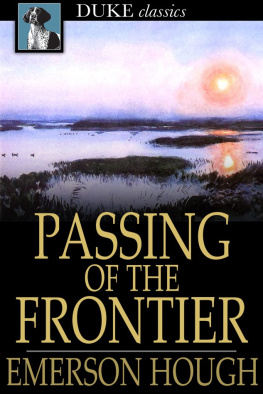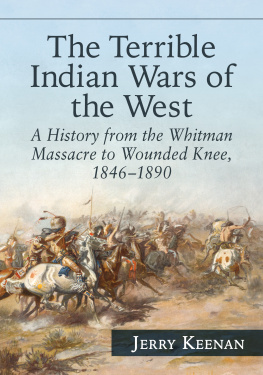Percy C. Hintzen - West Indian in the West
Here you can read online Percy C. Hintzen - West Indian in the West full text of the book (entire story) in english for free. Download pdf and epub, get meaning, cover and reviews about this ebook. year: 2001, publisher: New York University Press, genre: Politics. Description of the work, (preface) as well as reviews are available. Best literature library LitArk.com created for fans of good reading and offers a wide selection of genres:
Romance novel
Science fiction
Adventure
Detective
Science
History
Home and family
Prose
Art
Politics
Computer
Non-fiction
Religion
Business
Children
Humor
Choose a favorite category and find really read worthwhile books. Enjoy immersion in the world of imagination, feel the emotions of the characters or learn something new for yourself, make an fascinating discovery.

- Book:West Indian in the West
- Author:
- Publisher:New York University Press
- Genre:
- Year:2001
- Rating:3 / 5
- Favourites:Add to favourites
- Your mark:
- 60
- 1
- 2
- 3
- 4
- 5
West Indian in the West: summary, description and annotation
We offer to read an annotation, description, summary or preface (depends on what the author of the book "West Indian in the West" wrote himself). If you haven't found the necessary information about the book — write in the comments, we will try to find it.
West Indian in the West — read online for free the complete book (whole text) full work
Below is the text of the book, divided by pages. System saving the place of the last page read, allows you to conveniently read the book "West Indian in the West" online for free, without having to search again every time where you left off. Put a bookmark, and you can go to the page where you finished reading at any time.
Font size:
Interval:
Bookmark:
Thank you for buying this ebook, published by NYU Press.
Sign up for our e-newsletters to receive information about forthcoming books, special discounts, and more!
Sign Up!
A publisher of original scholarship since its founding in 1916, New York University Press Produces more than 100 new books each year, with a backlist of 3,000 titles in print. Working across the humanities and social sciences, NYU Press has award-winning lists in sociology, law, cultural and American studies, religion, American history, anthropology, politics, criminology, media and communication, literary studies, and psychology.
West Indian in the West
Self-Representations in an Immigrant Community
Percy C. Hintzen

NEW YORK UNIVERSITY PRESS
New York and London
2001 by New York University
All rights reserved
Library of Congress Cataloging-in-Publication Data Hintzen, Percy C.
West Indian in the West: self-representations in an immigrant
community / Percy C. Hintzen.
p. cm.
Includes bibliographical references and index.
ISBN 0-8147-3599-1 (acid-free paper)
ISBN 0-8147-3600-9 (pbk.: acid-free paper)
1. West Indian AmericansCaliforniaSan francisco Bay Area
Ethnic identity. 2. West Indian AmericansCaliforniaSan
francisco Bay AreaSocial conditions. 3. ImmigrantsCalifornia
San francisco Bay AreaSocial conditions. 4. San Francisco Bay
Area (Calif.)Ethnic relations. 5. San Francisco Bay Area (Calif.)
Social conditions. I. Title.
F869.S39 W545 2001
305.896'972907307946dc21 2001003120
New York University Press books are printed on acid-free paper,
and their binding materials are chosen for strength and durability.
Manufactured in the United States of America
10 9 8 7 6 5 4 3 2 1
To My Wife Joan Hintzen
For Her Dedication and Support
I am enormously grateful to those West Indian immigrants who agreed to share with me and my student researchers the details of their lives and insights into their understanding of who they are. These immigrants were not merely respondents but were also enthusiastic supporters of the project. I cannot thank them enough, and I hope that none is disappointed with its results. I hope, too, that I have answered many of their questions about their presence in the United States, as a small compensation for their valuable contribution to the book.
The book has benefited from the commitment and support of many student researchers, both graduate and undergraduate, at the University of California at Berkeley. In particular, I am deeply indebted to Allyson Nigorizawa, who came to the research project at a critical juncture and literally took over its administration when I was pressured with other duties. Allysons constant encouragement and her persistent and insistent cajoling ensured that my focus remained on the task of research and writing. When she left the project, she recruited Imelda Walavalkar, who brought to it the same diligence, thoroughness, and enthusiasm. Allyson and Imelda took part in much of the data collection and project organization, and they also periodically cleaned up and reorganized my office to make the research and writing more efficient and manageable. This book is a testament to their help.
As graduate student researchers, Paul Dottin and Nathaniel Silva worked on different phases of the project, and both made tremendous contributions to its eventual outcome. Grace Chang, another graduate student, also provided assistance with the research.
Graduate students Claudia May, Cheryl Roberts, Anjelina Villafane, and Joan Hintzen and undergraduates Tala Dowlatshahi, Manijeh Fata, Raha Jorjani, and Lemlem Rijio did yeoman service as student interviewers. Their efforts are evident throughout the book.
I had the good fortune of working with Wendy Ledger, an excellent and diligent transcriber. I was always amazed at the speed and accuracy of her transcripts.
The project was supported by a grant from the Ford Foundation for departmental development, provided while I was chair of African American studies at Berkeley. I was one of the fortunate beneficiaries of the funding allocated to faculty research. The Office of the Dean of Social Sciences gave me a six-year stipend for department chairs, much of which supported the research for this book.
Frances Carter was my departments office manager while I was doing my writing and research. Without her stewardship, nothing would have been accomplished. Department staff Byron Spicer, Glenn Robertson, and Stephanie Jackson contributed to the smooth and efficient running of African American studies while I was preoccupied with research and writing and teaching.
The idea for this project came from work by Aurora Noguera-Devers, who wrote her senior thesis on West Indians in the San Francisco Bay Area. It raised interesting questions that I have attempted to answer in the book. Her work underscores the sophistication of todays undergraduates.
Finally, I would like to thank Jennifer Hammer at New York University Press for her patience, suggestions for reorganization, and support.
West Indian in the West
This book emerged from my interest in identity construction among West Indian immigrants in the San Francisco Bay Area. At one level, it is an examination of how the understanding of identity and the way it is produced and reproduced explain the relationship between black West Indians and African Americans. Important in this regard is how the United States racial construction intersects with West Indian immigrants distinctive cultural baggage and resources (such as education and income). It is at these intersections that their notions of difference from African Americans are produced. Identity construction is related to patterns of affinity and antipathy, which are the particular foci of this study. In sum, my purpose is to explore the different and complex meanings of West Indianness.
My choice of the San Francisco Bay Area was based on the patterns of identity construction and resource availability that differ from the typical West Indian communities in the eastern seaboard cities of the United States. In the Bay Area, West Indian identity is constructed around reference schemata of achievement and foreignness by a group that is disproportionately middle and upper middle class.
I consider authenticity to be the most important issue in the social sciences and one that should be the preeminent concern of scholars presenting and representing social reality. Do the data and their interpretation fully represent the collective and individual understandings of those being studied? Until now, social scientists have been able to avoid answering this question by falling back on notions of abstraction and interpretation. They make claims of seeing and understanding that are unfathomable to those whom they study. These social scientists insights derive from special qualities of knowing unavailable to their subjects. Not surprisingly, their conclusions cannot be confirmed except by other social scientists.
The issue of whose understanding is authentic and how to judge such authenticity has been a preoccupation of social science methodology. The many discussions of this subject need not be reproduced here in their detail. Those social scientists who subscribe to a more formalized view of social science objectivity and to notions of value neutrality distinguish between the validity of representations of social reality, presented as data, and their reliability. The demands of each are considered to be in conflict. The test of reliability pertains to the ability of social analysts to reproduce, independently, the findings of others, which demands prior agreement about the nature of social reality and how it should be measured. This test leads to conceptualizations and categorizations that emerge in intellectual debates among scholars that can have absolutely nothing to do with the way people understand their social world, broadly defined, which in turn leads to the argument for validity. This argument requires methodologies of induction in which, in a process of conceptualization, data gathered from social observations are abstracted and organized into concepts and their categories. In this process, the researchers understandings and interpretation are paramount.
Next pageFont size:
Interval:
Bookmark:
Similar books «West Indian in the West»
Look at similar books to West Indian in the West. We have selected literature similar in name and meaning in the hope of providing readers with more options to find new, interesting, not yet read works.
Discussion, reviews of the book West Indian in the West and just readers' own opinions. Leave your comments, write what you think about the work, its meaning or the main characters. Specify what exactly you liked and what you didn't like, and why you think so.






